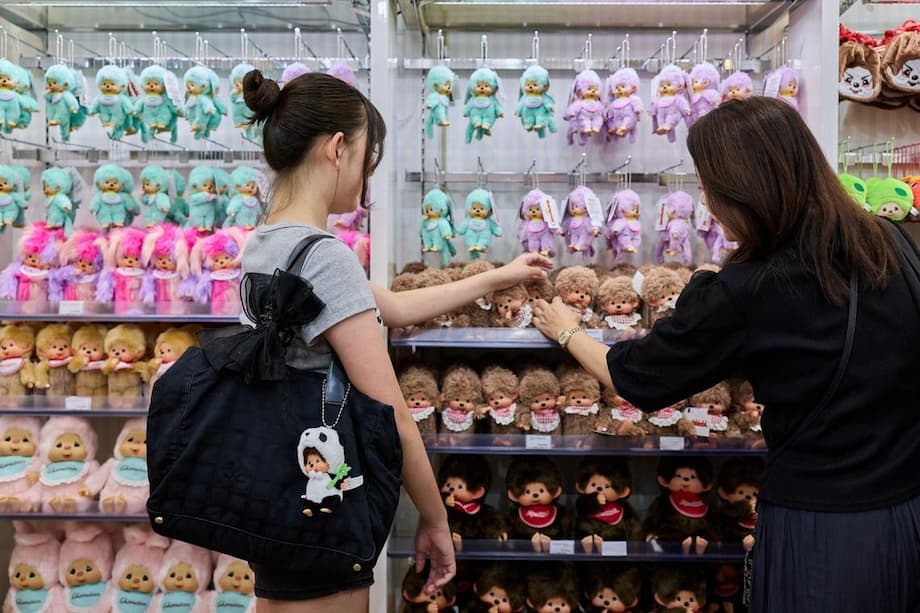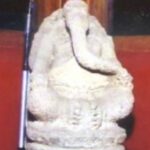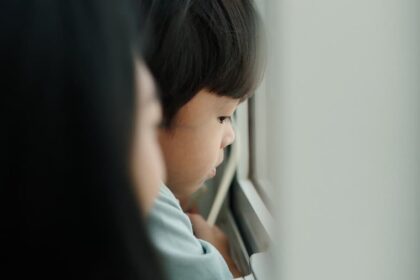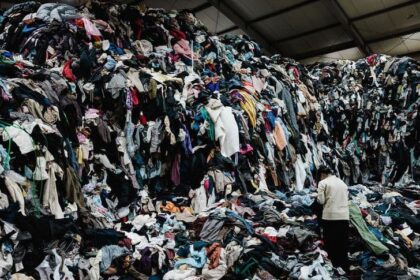A 1970s icon finds new life with Gen Z
When Australian influencer Sam Todd traveled to Tokyo earlier in 2025 to comb the city’s vintage fashion stores, she carried a second mission: to find a fuzzy Monchhichi keychain for her designer handbags. The hunt ended in Harajuku, where a toy shop had set purchase limits to cope with demand. Her TikTok showing the moment drew more than 300,000 views. That small charm captured a bigger story. A 51 year old Japanese character, long associated with childhood, has reentered the global spotlight as a fashion accessory for adults and a collectible with real scarcity.
- A 1970s icon finds new life with Gen Z
- How social media turned plushies into fashion
- Sales surge and a push overseas
- The role of yen, tariffs, and supply chains
- A strategy shift toward adult fans
- Culture, community, and a Tokyo park
- Media reboots and licensing deals
- Competitors and the bag charm boom
- What comes next for Monchhichi
- The Bottom Line
Shoppers like Todd are helping power a surge that rivals the toy’s first golden age. Sekiguchi, the creator and license owner based in Tokyo, says sales of Monchhichi more than doubled in the fiscal year that ended in February 2025, reaching 4.6 billion yen. International buyers now account for about 40 percent of revenue. The company has increased manufacturing capacity in China and is exploring more licensing partnerships. Momentum has been helped by a weaker yen, social media trends, and a wave of collectible plush characters like Labubu, Sonny Angel, Smiski, and Jellycat that are reshaping how adults accessorize.
Todd, an Australian influencer who documents fashion finds on TikTok, put it simply after comparing prices and selection in Japan to what she sees at home.
“It was so nice to finally be able to find it. The popularity has just been growing and growing, so everybody wants one.”
Monchhichi first arrived in 1974 and became a rare pre internet global hit. There were licensing deals with Mattel and even an animated cartoon. The boom faded by the mid 1980s and the brand pulled back from many markets. Interest later resurfaced, including a revival in the 1990s led by German retailers and a big wave in China about a dozen years ago. The current comeback gathered pace over the last two years, with Thailand and South Korea acting as early hotspots. In June, Lisa of Blackpink posted herself shopping for Monchhichi merchandise, adding star power to a trend already flooding Instagram and TikTok feeds.
How social media turned plushies into fashion
Monchhichi sits at the center of a wider shift in how adults use toys. Fashion has turned playful. From Labubu to Crybaby and Sonny Angel, small characters and plush charms are turning into bag ornaments, outfit accents, and conversation pieces. Retailers from streetwear boutiques to bookstores now stock these items near the checkout, a sign that they work as impulse purchases as well as collectibles. Fashion editors describe the rise of childhood references as part of a larger comfort seeking trend. Psychologists point to the appeal of cute, tactile objects that offer a moment of relief in stressful times, letting adults express tenderness without giving up style.
The trend is not without critics. Some on social media mock adults, especially women, for leaning into cute aesthetics. Others view it as a way to expand what adulthood can look like. Brands are leaning in regardless. The result is a fast growing market, with Spherical Insights projecting the global keychain pendant segment to top US$28 billion by 2033, up from less than US$18 billion in 2023. Monchhichi, once a childhood companion, now doubles as a badge of identity on the straps of handbags and backpacks.
In Tokyo, content creator Yuma Kardasian embodies the shift. He rarely leaves home without two Monchhichi keychains, and estimates he has spent around 300,000 yen on the brand over two years.
“It is an essential fashion item. Going out without Monchhichi is like going to work without socks.”
That kind of attachment speaks to more than nostalgia. Monchhichi offers a stable expression, a soft touch, and a familiar face that photographs well. It also signals taste to anyone who recognizes the character, making it a small but effective style statement on a crowded subway or a busy street.
Sales surge and a push overseas
Sekiguchi’s president and chief executive, Toshitaka Yoshino, says the company plans to meet demand while keeping a clear view of the cycle driven nature of trends. While expanding production in China, the company is ramping up licensing and retail partnerships overseas. Monchhichi has recently landed in US chains such as Urban Outfitters and Barnes & Noble. In Japan, classic keychains generally retail around 2,200 yen, while US prices for select items, like fruit beanie plush charms at Urban Outfitters, retail around US$24. The company is also broadening collaborations, including a tie up with Hello Kitty and a co branded collection with Paris Saint Germain that helped introduce Monchhichi to new fans of sports and street culture.
Yoshino’s goal for this cycle is big, yet he frames it with caution.
“We just want to flood the world with Monchhichi.”
Europe remains important. Decades after the brand’s first success at the Nuremberg trade fair, Germany, France, and the Netherlands continue to be active markets. Sekiguchi now works directly with a variety of retailers and licensing agents across the region, reflecting a more diversified approach than in the 1970s or 1980s. Growth in China has also accelerated, giving the brand a large consumer base in Asia alongside renewed interest in Southeast Asia and South Korea.
The role of yen, tariffs, and supply chains
Currency movements and trade policies are shaping this comeback. A weaker yen has made Japan attractive to inbound shoppers from Europe and North America, who arrive ready to stock up on hard to find characters and limited designs. At the same time, Monchhichi production remains concentrated in China, where roughly 95 percent of items are made. That exposes the company to shifts in tariffs on toys imported into the United States, the brand’s largest market for overseas revenue.
Yoshino described a sharp downturn earlier this year as trade tensions flared.
“Orders from the US retailers were going well earlier this year, but in May, everything completely stopped.”
He adds that orders have partially recovered, although not back to pre tariff levels. That reality helps explain the measured approach inside Sekiguchi. The company is increasing output but resisting a fast hiring spree. Management is operating with the mindset that hot sellers eventually cool, a philosophy shaped by more than a century of family led toymaking. The hope is to keep the business agile enough to serve fans while absorbing shocks from shipping, labor, or trade costs.
A strategy shift toward adult fans
Sekiguchi has tweaked its playbook. Past efforts that focused on children ran into stiff competition from superhero franchises like Spider Man and princess led hits like Frozen. The current emphasis is on adults, who have spending power and longer attention spans for character brands. The approach appears to be paying off across social media, where a Monchhichi on a handbag handle can say as much about personal taste as a sneaker choice or a graphic tee.
Yoshino argues that the perception of these products has changed with this new audience.
“There is a growing understanding when it comes to adults buying those toys for themselves. People are finally starting to recognise Monchhichi as a character rather than a toy.”
Retail distribution mirrors that shift. Beyond specialty toy shops, Monchhichi now turns up in lifestyle chains and bookstores that court young adults. Collaborations with culture rich brands such as Hello Kitty help keep the character in front of shoppers who might not scan a toy aisle. Pricing also positions key styles as affordable gifts, encouraging repeat purchases and trading up to rarer designs.
Culture, community, and a Tokyo park
Monchhichi has also grown into a place based experience in Japan. In the Shin Koiwa neighborhood of Tokyo, a dedicated Monchhichi Park near Sekiguchi headquarters draws parents, nostalgic adults, and curious teens. The angel winged statue has become a frequent photo stop, the small museum explains the origin story, and interactive elements added in recent years invite repeat visits. Statues and stained glass installations at the nearby station turn the character into a local landmark, giving the area a distinct identity.
The park’s presence fuels digital sharing. Photos and short videos travel quickly through TikTok and Instagram, helping introduce the character to people who did not grow up with it. That blend of physical space and online discovery expands the fan base, and turns a half hour stop into a cultural breadcrumb leading to stores and collaborations.
Media reboots and licensing deals
New content has helped keep Monchhichi visible to families and collectors. A recent animated TV series for children was developed with OuiDO Productions, with PGS handling international distribution. Episodes run about 11 minutes and present the Monchhichi world as a place where characters help create and protect sweet dreams. The project reintroduced the brand to broadcasters and streamers, while separate licensing programs placed Monchhichi on puzzles, apparel, and promotions across Europe and the Middle East. Silverlit, a long standing partner, developed toys that accompanied broadcasts in several markets.
These moves fit a broader strategy: keep the character present in daily life while collaborating in ways that feel fresh. A tie up with Hello Kitty gave fans a bridge between two of Japan’s most recognizable faces. A partnership with Paris Saint Germain connected Monchhichi to sport and street aesthetics. Retailers like Urban Outfitters curated plush charms that meet young adults where they shop. The mix stokes a sense of surprise, which is valuable in a crowded market where attention shifts quickly.
Competitors and the bag charm boom
The broader collectible market is running hot. Pop Mart’s Labubu, a mischievous character from a picture book, has become a global fixture on phone cases and bag handles. Jellycat, Sonny Angel, Smiski, Crybaby, Skullpanda, Noodoll, and a rebooted Tamagotchi all feed a category that merges cuteness, rarity, and social proof. Lifestyle and fashion media increasingly offer guides to bag charms as alternatives to Labubu, and Monchhichi often appears near the top as an icon with history and a friendlier face.
Scarcity adds fuel. Shops in Tokyo and Bangkok sometimes impose purchase limits on hot designs. International shoppers often pay higher prices at home, which keeps travel shopping lively. A quick scan of secondary marketplaces shows steady listings for new and revival items, including sets manufactured in 2025 and shipped from Japan. That activity is another signal that demand is outpacing supply in pockets, even as Sekiguchi adds capacity.
What comes next for Monchhichi
The company is setting up for long term stewardship without chasing every short term spike. As part of the brand’s 50th year, Sekiguchi established a dedicated Monchhichi entity to strengthen intellectual property management and deepen partnerships. The family leadership that guided the brand through earlier peaks and valleys continues to favor sustainable growth. That means growing manufacturing in China while guarding against overexpansion, expanding licensing where it enhances the character, and keeping a close handle on quality so Monchhichi feels consistent to fans across countries.
Future collaborations are likely to mix legacy names with niche partners that speak to specific communities, from streetwear to sports to art toys. Media projects will keep seeding awareness among children, even as retail strategy centers on adult collectors. The brand’s global footprint, especially in Europe and Asia, positions it to keep benefiting from travel shopping and cross border e commerce, as long as tariffs and shipping costs do not erase pricing advantages. If the last year is any guide, the character’s simplicity, soft textures, and instantly readable face give it a distinctive place in a crowded field.
The Bottom Line
- Monchhichi sales more than doubled to 4.6 billion yen in the fiscal year ending February 2025, with about 40 percent from overseas buyers.
- Gen Z and young adults turned Monchhichi into a fashion friendly bag charm, powered by TikTok and Instagram trends.
- Production is concentrated in China at about 95 percent, which heightens tariff exposure in the United States.
- Orders from US retailers slowed after tariffs tightened, then partially recovered but remain below earlier levels.
- Retail partners now include Urban Outfitters and Barnes & Noble, and pricing positions key chains as accessible gifts.
- Collaborations with Hello Kitty and Paris Saint Germain, plus an animated series, have expanded reach and kept the brand current.
- Monchhichi Park in Tokyo, along with public installations, gives the character a place based presence that feeds social sharing.
- The global keychain pendant market is forecast to exceed US$28 billion by 2033, offering a large runway for growth.
- Competition from Labubu, Sonny Angel, Jellycat, and others is intense, yet Monchhichi’s nostalgic appeal differentiates it.
- Sekiguchi is scaling cautiously, focusing on adults as core customers while investing in licensing and measured production growth.












